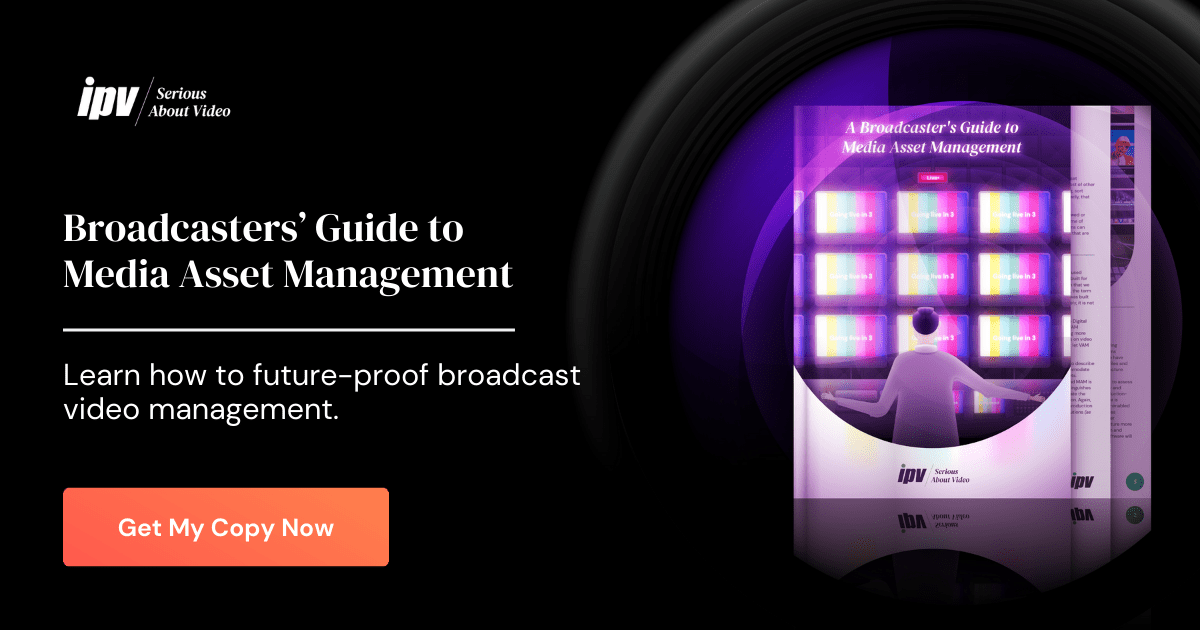
Even before work-from-home was a global phenomenon, there’s been a growing trend towards remote editing. The internet has become ubiquitous (heck, you can connect your coffee maker to the internet!), so why should video editing remain an archaic, offline activity? The simple answer is, it shouldn’t, and for some, it hasn’t for a few years now! Granted, there are some pretty big technical hurdles to be cleared before you’re able to edit video remotely (traditionally big files, needing a huge bandwidth), but there are great solutions available now, and even 2 Mbps is workable for intelligent remote editing systems. The question is, which one is right for you?
Well, due to current extenuating circumstances, remote editing is not just nice to have, but essential. While some Media Asset Management systems, Curator, for example, were already set up for remote working, in the scramble to allow workers to practice their skills from home, some Media Asset Management providers have stretched and squeezed their products to make them fit, with varying success, into the new, obligatory, work from home paradigm.
As video producers urgently look for remote working solutions, some have turned to a browser-based NLE (non-linear editing) editing platform, such as Blackbird, rarely considered before the pandemic because it is rather lacking in deep features for Adobe Premiere Pro and Avid users and is designed for a very specific purpose. Using an internet browser, Blackbird Forte connects to existing on-prem or cloud storage, generates proxies in real-time and sends them to their proprietary browser-based NLE platform. This means editors can clip and assemble video within moments of footage being ingested. It’s a full-fledged video editing system in the same window you access email or browse cat videos on YouTube. It’s a slick solution for some specific workflows. Credit where it’s due!
To understand whether this is the right solution for your company, it’s essential to look at the business as a whole, taking into account your current and future needs, and your ability to deal with the unexpected. It’s also important to remember that your planning needs to include human factors. Will you be able to attract the best editors if they can’t work with the usual NLEs (Premiere Pro/Avid)? Will your existing editors be happy to switch out to a new NLE interface overnight? Will they be happy to work with your new set-up?
Browser-based editing vs media asset management
Before we dive in and look more closely at browser-based editing vs. the alternatives, it’s worth taking a minute to consider how MAMs and editing facilities are put together, and how these two concepts - asset management and editing - relate to each other.
When NLEs first appeared in the ‘90s, they were inevitably slower and extraordinarily less capable than they are today, but the principles were the same: media clips could be placed on a timeline, trimmed and moved relative to each other. But the timeline is only a graphical representation of what is essentially the output of a database. Within themselves, these early NLEs were MAMs. It’s just that they were physically bound by whatever was on the editor’s computer at the time. And there was no way that it was possible to search a larger, external database of material.
Today, it could hardly be more different. The cloud is becoming the natural home of media creators. Laptops are more powerful than the desktop workstations of a few years ago, and MAMs are able to extend across any storage estate, even globally. As we’ll see later, this is a perfectly complementary development for the new world of remote and collaborative working.
Some imaginative companies, like Blackbird, have even created an NLE that works in a browser. Clearly, there’s quite a bit of infrastructure needed to “serve” that arrangement: physical, on-premise servers to handle tasks like ingest and conforming back to full resolution material.
There’s no question that this works and is a credible technical solution. But take a moment to reflect on whether it’s the right solution for you. Consider the following points:
Not a “standard” NLE
Browsers are everywhere. Essentially a modern browser is a “virtual” computer that can run applications. Browsers are - with some rough edges - extremely standardized in that they are able to run a wide variety of applications and show a diverse range of media. But there are limitations. Software that runs in a browser will be slower and less capable than code that is “‘closer to the metal”. There are many layers of abstraction between your device's actual processor and your browser application. And just because your device can run a browser, showing web pages and emails, performance will depend heavily on the underlying hardware platform.
Compare this with a more “traditional” NLE, where the program has direct access to all of the host computer’s resources, including GPU, CPU, I/O and storage devices. In fact, there is little in common: the “direct” approach wins every time. Editing can work in a browser, but only in the sense that the output from a timeline edit is an edit decision list - a text file. Clever information exchange between a browser-based NLE and the full resolution material back at the facility can yield respectable results, but it is, inevitably, a compromise. In some cases it’s the right compromise, but for across-the-board functionality, there are much better paths to take.
Freelancers choose the best NLE for a job
The chances are that you have at least some freelancers in your creative team, and the use of freelance talent is only set to rise as businesses cautiously recover from this crisis. It’s also likely that your employees used to be freelancers. It’s always worth listening to self-employed editors. They have a feel for what works and what doesn’t. Right now, you’re likely to find that the majority have chosen Adobe Premiere Pro as their default NLE. There are plenty of reasons for this.
- It’s a very good application, in use everywhere from creative agencies, brands and even Hollywood
- It’s ubiquitous. So if you’re good with Premiere Pro, you can get a job almost anywhere.
- It integrates really well with other Adobe applications like After Effects, Photoshop and Audition
- It’s well supported by other software and services
All of which are very good reasons not to choose a browser-based NLE. Switching would mean all editors having to learn a new NLE. There will always be similarities but deep down there are big differences. Not only will freelancers be reluctant to relearn all their skills, but they will also worry about keeping their knowledge of the mainstream applications current. Hiring for Blackbird could be a challenge.
Here are some other reasons why it’s better look at solutions like Curator:
It’s an intelligent, searchable media asset management layer in the cloud
Modern desktop application NLEs like Premiere Pro work incredibly well. They’ve had decades of development and go very deep in terms of features and capabilities. When you need power, it’s there, co-existing alongside nuance and subtlety.
Curator doesn’t interfere with this. It enhances it. Premiere Pro is a fine editing tool. What it doesn’t have is a limitless connectivity with the outside world, which is where content comes from. So Curator has been designed to sit comfortably above Premiere Pro, allowing editors to find content instantly wherever they are, and wherever it is.
Instead of having to navigate through mountainous folder trees, the right media is just a search away: the work of a few seconds. When you find your media, it’s right there, inside your favorite NLE. Even when you’re searching for content across the globe, you’re doing it from within the familiar surroundings of Premiere Pro.
There’s no problem with formats
Because you’re working inside Premiere Pro, when you’re using Curator, you know that there’s no problem with formats. Everything that works with Premiere Pro works with Curator.
Remote working at the core
Blackbird’s browser-based NLE is designed for remote working. So is Curator - it has remote capabilities built into its core, connecting Premiere Pro users worldwide. What’s more, Curator can work on a private or public cloud (your own on-prem hardware that's presented out securely to your editors over the Internet, or hosted on public clouds like AWS, GCP, and Azure). There’s no loss of productivity or user experience as Curator works fluidly inside Premiere Pro. An incredibly powerful and complete set of media asset management tools bring scalability to Premiere Pro installations. So you know that whatever happens, you’ll be able to work where you need to, now and in the future.
Collaboration
Remote working and collaborative production go together. If you’re not in the same physical office, it’s essential to be able to work closely with your colleagues, handing over projects without downtime. Curator has collaboration nailed. Not only can Curator users work together on projects, but anyone, anywhere, can upload clips using Curator Connect, create Collections of clips in Curator Clip Link, and can explore other editors’ projects though Project Explore in the Curator for Adobe Premiere Pro Panel.
Workflow
Curator becomes your workflow inside and outside of Premiere Pro. Immensely scalable and yet you’ll be able to home-in on a single clip amongst millions. Curator integrates easily with third party software and services for a frictionless workflow that grows with you. Use AI to help find similar clips and to make speech searchable. Curator guides you through logging and metadata creation to ensure that it gets easier to search the more media you ingest, not harder.
You can’t compare…
An NLE in a browser is a fine achievement, but it’s limited. It’s an unattractive proposition for career-minded editors, and it locks you into an editing ecosystem that’s always going to be playing catch-up with the default choice for editors, Adobe Premiere Pro. Imagine driving a car where the pedals did different things to what you were expecting. It wouldn’t go well. The combination of Curator and Premiere Pro gives you the best of all worlds: one of the most powerful NLEs on the planet, and a global, searchable media asset management that brings the best of media management right inside your NLE.
Set on Browser-Based?
Then you probably have some very specific requirements that involve getting live footage edited, branded and published to social media within minutes. Enjoy!
For everything else outside of that narrow scenario, please do check out IPV’s Curator. Is it right for you? It’s right for WarnerMedia, one of the biggest broadcasters in the world, as well as sports teams like the Golf Channel, brands like Home Depot, government agencies like NASA and academic institutions like UNC Charlotte. It’s designed to scale from medium sized installations to gigantic ones. It’s flexible and agile. It will grow with you. It will help you deal with uncertainty. It will make you more productive. It will save you money and squeeze value from your existing assets by allowing users to monetize archived content.
Questions? Let’s chat!
We want to get to know you and your business needs. Book time directly with Gabrielle below to see how Curator can help you take control of your video assets and produce quality video content faster than ever! 👇👇👇

Speak Your Mind